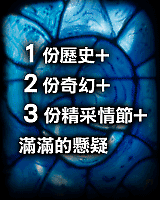 Lotus’s all-new Evora was one of the undeniable stars of the show. Developed from scratch in just 21 months, this mid-engined 2+2 is aimed squarely at the heavy hitters of the sports car market. Lotus wants to move upmarket, and knows full well that design, detail and packaging are all essential elements; the company’s global reputation for handling ability and dynamic excellence is a given. Wallpaper spoke to Lotus’s Chief Designer Russell Carr, Design Manager Steve Crijns - responsible for the Evora’s svelte bodywork - and Senior Designer Anthony Bushell, the man charged with the new car’s interior.
Lotus’s all-new Evora was one of the undeniable stars of the show. Developed from scratch in just 21 months, this mid-engined 2+2 is aimed squarely at the heavy hitters of the sports car market. Lotus wants to move upmarket, and knows full well that design, detail and packaging are all essential elements; the company’s global reputation for handling ability and dynamic excellence is a given. Wallpaper spoke to Lotus’s Chief Designer Russell Carr, Design Manager Steve Crijns - responsible for the Evora’s svelte bodywork - and Senior Designer Anthony Bushell, the man charged with the new car’s interior.Is the Evora all about clever packaging?
RC: Yes, it’s all down to the choice of layout. It’s a little bit longer than our other cars, but the ‘coke bottle’ shape really foreshortens the wheelbase - which is also a bit longer than you’d normally have for a sports car. The ‘crossover graphic’ where the roof meets the rear screen is a very big help in getting the cabin to look small - you don’t read the height. The cutaway sills ‘pull’ the wheels away from the bodywork, while the plus 2 capability feels like a bonus.
How do you make a car feel more premium and upmarket?
SC: The Evora has a sophisticated form language. For this size of car, swoops and spoilers just wouldn’t work. This car has a dignity - it’s not a mid-life crisis car. You have to find the right balance between something that’s just right and not over the top. AB: Inside, we’ve got a premium form language going on, the stitching and materials. There’s a raw honesty about the materials.
RC: Using leather is very classical, but the form language is very dynamic. There are etched metal switches like a hi-fi - we're very proud of them.
AB: The rear cabin is also trimmed in darker materials - it's like a surprise that it's there.
Is the use of a term like ‘coke bottle’ meant to evoke an earlier era in car design?
SC: The 60s and 70s was my favourite era for car design, but this is very modern. We’d love our cars to be at Goodwood in 20 years time, so we’re always designing with an eye to the future.
RC: There’s a strong DNA link with our current cars as well. You can always tell it’s a Lotus.
 Honda walks a fine line between folksy and futuristic, juxtaposing the homely sound of Garrison Keillor’s voice with the slick imagery and high concept approach of the big ticket advertising agency (their ads are so complex that each spot demands an accompanying documentary). The cars themselves represent some of the most sophisticated engineering on the planet, but the simple truth is that getting into a Honda doesn't have the same frisson as other, more emotive, brands.
Honda walks a fine line between folksy and futuristic, juxtaposing the homely sound of Garrison Keillor’s voice with the slick imagery and high concept approach of the big ticket advertising agency (their ads are so complex that each spot demands an accompanying documentary). The cars themselves represent some of the most sophisticated engineering on the planet, but the simple truth is that getting into a Honda doesn't have the same frisson as other, more emotive, brands.The 'Open Study Model' is Honda's attempt to make the kind of car you drive for the sake of it. The OSM is a compact two-seater, a design study with a hybrid power plant at its heart and lightweight, fuel-efficient construction. Andreas Sittel oversaw the OSM's design at Honda’s German studios, located in Offenbach just outside Frankfurt. Choosing to outsource the design of the OSM to a European studio illustrates the oodles of confidence this quintessentially Japanese brand has in its ability to build cars that satisfy all markets, pushing technology and efficiency over regional variations.
Tell us about the OSM
This is a design study for a fun to drive car - the target was to show this character as well as being environmentally friendly. We really tried to create a style that showed a clean and dynamic character. One key intention was that the interior and exterior should be united, bringing the exterior into the interior through the shape of the rear body panel. Normally the instrument panel is a massive volume, so we tried to chop it and sculpt it, making it appear lighter.
Which model did this design direction begin with?
The CR-Z concept unveiled at Tokyo 2007 was a strong production proposal, but we have no plans for this car. It shows what we think of the next step, a clean and dynamic, more feminine character. We didn’t try to follow any styling trends.
Is this an example of a move to more global design?
The OSM was designed in Germany, at Honda’s main European Design Studio in Offenbach. The CR-Z was developed in Japan. But to use an intelligent technology like hybrid or fuel cell means we have to give the customer more feeling for the technology underneath. We want styling, design and layout to show this technology. It’s an international style. Japan is the mother plant, so as a satellite studio we’re really happy to get the chance to show our capabilities to the rest of the company.
More news:http://www.britishmotorshow.co.uk/









0 意見:
張貼留言